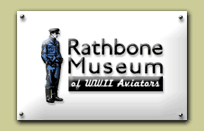








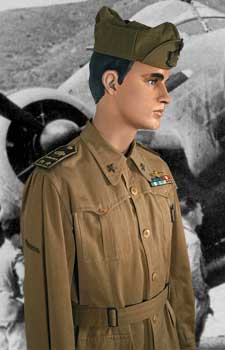


This Italian pilot is pictured in North Africa wearing his tropical service dress consisting of a khaki cotton twill Sahariani (bush jacket), long pants and a khaki bustina (side cap). Rank is indicated by shoulder boards which was regulation for this dress.
A full view of the tropical service dress showing the cut of the uniform. This style jacket was used by all Italian armed services in the desert and became very popular with Italy's German allies as well.
Another view showing the pilot's brevet badge, his valor and campaign ribbons and his gold class bomber badge.
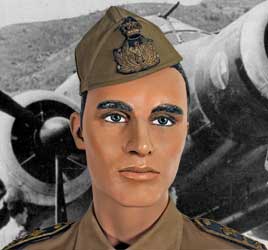
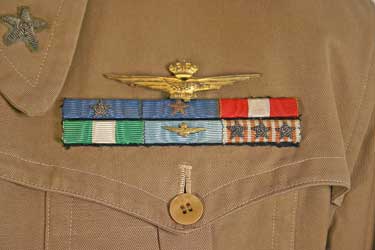
A closer view of the pilot's bustina. This particular style was that of the Italian Army. The Air Force had a more typical center pleated envelope style. However it is not unusual to find that in tougher theaters like N. Africa, soldiers made do with what they have. The central device is the Air Force officer's badge.
A close up of the pilot's awards. The wing is the standard wing of the fascist Regia Aeronautica. The style is a very common one. The awards, which are mounted on dark blue felt include Military Valor Cross, silver; Military Valor Cross, bronze; Order of the Crown of Italy (Knight); Silver Officer's Service Cross (16 years); Air Force Long Service Medal (gold = 20 years); and a very faded 1940-43 Campaign Medal (3 stars = 3 years). Note the celluloid button designed to look like horn or tortoise shell. The stars on the collar was for all Italian armed services.
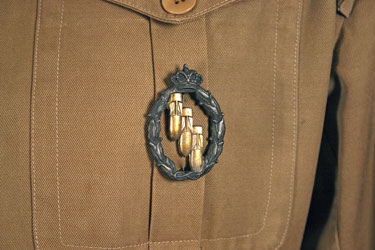
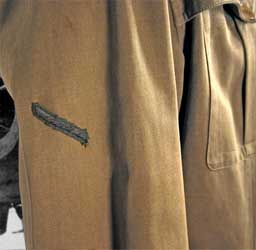
The Bomber Merit badge in Gold. This specialty badge was awarded for excelling in a certain aviation specialty. There were three grades, gold, silver and bronze.
The bullion stripe on the sleeve is a wound badge.
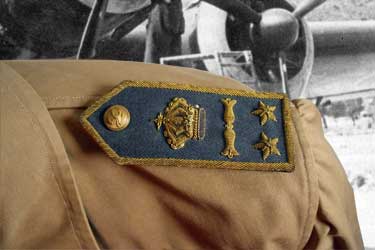
The epaulets for the tropical uniform were unique from their formal dress counterparts. The style was created for colonial wear and follows a more angular and plain design. The gold around the edge signifies field grade officers and the two stars indicated lieutenant colonel. The pilot's scepter indicates the man's role as flight.